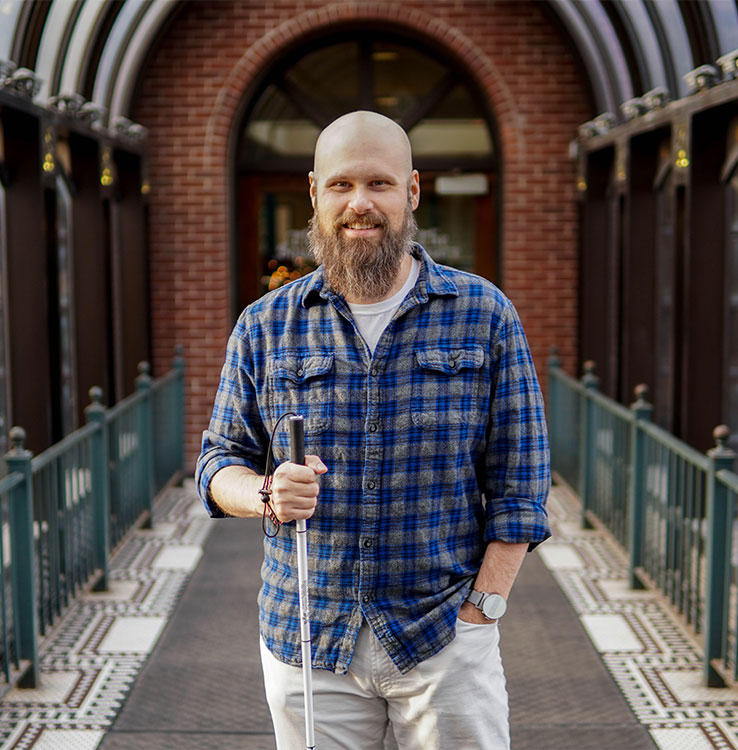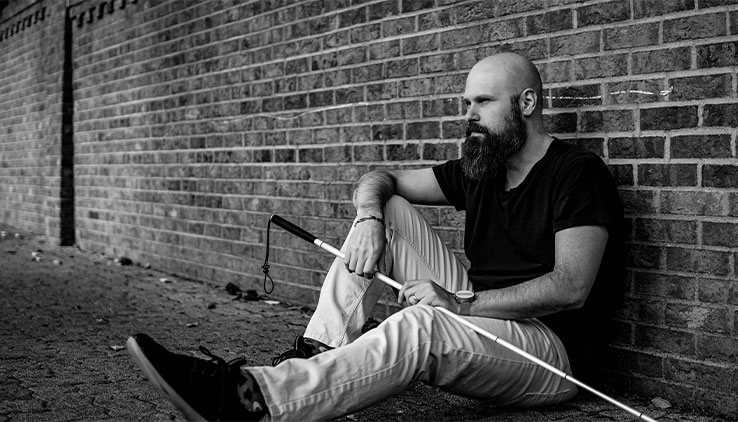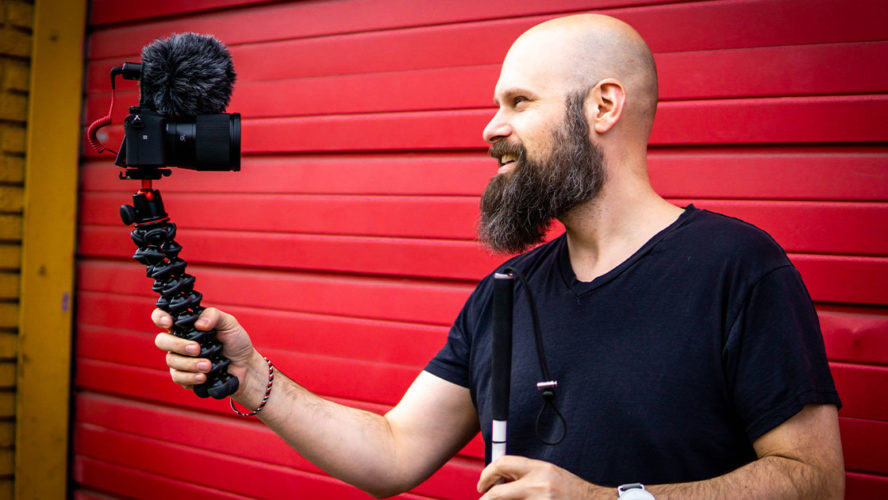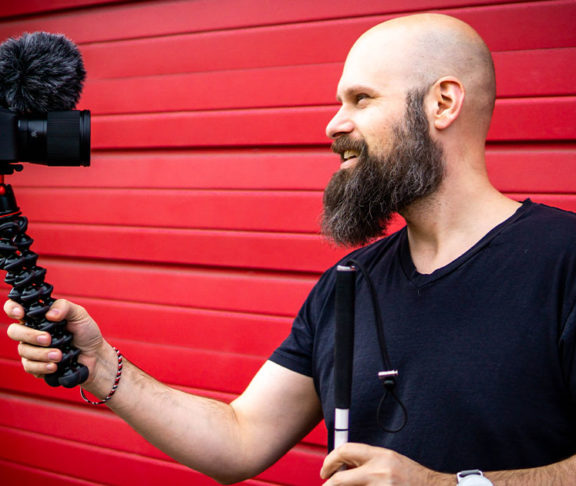Legally blind since his mid-teen years, Sam Seavey is the creator and host of The Blind Life YouTube channel, which has been dubbed the internet’s top guide for assistive technology. We talked with him about his inspiration for starting the channel and his best tips for living a great life while visually impaired.
Seavey was 11 years old when he was diagnosed with Stargardt’s Disease, an early-onset form of macular degeneration. He’s lived with vision loss for over 30 years, and awhile back found himself craving a community of others with whom he could talk about shared experiences.
“One day, I was inspired to search on YouTube for information about vision impairment, just to see what was out there, and there really wasn’t anything,” Seavey said. “That’s when I decided to start my own channel.”
On The Blind Life, Seavey showcases his expertise in researching and testing assistive technologies, offers tips for better ways to manage daily tasks as a person with vision loss, and interviews key stakeholders in the visually impaired community.
“All the stuff on my channel, I actually do live and breathe every day,” said Seavey, who has created more than 825 videos for The Blind Life and amassed over 56,000 followers.
Even for those who don’t have vision loss, the channel offers engaging insight into what it’s like living without the use of sight. In one of his most popular videos, he explains exactly what seeing with macular degeneration is like, dispelling the myth that there are “black spots” in the middle of his field of vision.
“Your brain tries to fill in what’s missing in your central vision,” he explains in the video. “And it does this by gathering information about what’s around it, in the periphery.”

Top tech
In his videos, Seavey regularly tests out the latest and greatest vision accessibility technology aimed at helping those in the community more easily perform daily tasks. However, he runs into more hurdles than most while working as a content creator.
“My main thing is video production, and for someone who doesn’t have much vision, it’s difficult,” said Seavey, adding that things like cameras, microphones, and editing software are rarely made with visually impaired users in mind. “So, I have to create systems. Everything is always ready to go — all I have to do is push record and I know that I’m going to be in the shot.”
Seavey’s creative — and often innovative — approaches to living with vision loss have made him a sought-after speaker and consultant in the field of assistive technologies. He’s been the assistive technology and training program manager at the non-profit Bluegrass Council of the Blind since 2016, and has collaborated with companies like Google, Samsung, Amazon, and Microsoft on their own assistive technologies.
He’s told many companies and decision-makers that improved battery technology would make life easier for him and other visually impaired people. “Some devices are so big and bulky because of their batteries that they prevent a lot of people from using them,” he said.
In particular, Seavey says better, slimmer batteries would greatly improve the usability of augmented-reality headsets, which can help with reading, face recognition, and can even help visually impaired users see a TV and other screens. However, the bulkiness of these headsets, largely because of their batteries, Seavey says, makes them impractical for daily use.
“If we can solve that problem of having big batteries, we can streamline these things and make them look more like sunglasses,” he said.

Accessibility in your pocket
While the list of cutting-edge technologies designed to make life easier for those with vision loss is long — and growing every day — Seavey says it’s a device nearly everyone already has that he couldn’t imagine living without: his smartphone.
“I can use mine as a video magnifier, a text-to-speech tool, I can call to get transportation, I can even use it to take a picture of a menu and it will read it out loud to me,” Seavey said. “I can start a video call with somebody and ask, ‘Hey, are these socks both brown? Or is one black?’
“I know it’s kind of a cop out, but the smartphone has to be the best assistive technology, in my opinion.”

